
BERLIN TEMPELHOF AND THE ONE-ELEVEN

The end of an era is a "diplomatic" way of describing the pending closure of Berlin's Tempelhof airport on the 31st October 2008. Many other words come to mind to sum up supporter's feelings regarding the end of a very long battle to keep one of the world's most famous airports open. Sadly that long battle has now been lost but that doesn't stop us celebrating this unique and historic airfield!
The site of Berlin Tempelhof has been associated with aviation since the earliest days of powered flight. It was originally known as "Tempelhof Field" in the early 1900s and was visited by several of the world's first pioneering aviators such as Orville Wright. The airport itself was officially opened on the 8th October 1923 making it one of the world's oldest airports and one of three iconic pre-war airports along with London's Croydon and Paris Le Bourget! It was given the name "Tempelhof Central Airport". The newly formed "Deutsche Luft Hansa" carried out its first scheduled flight from the airport on the 6th April 1926. The original terminal was a relatively small building but in 1927 it was connected to Berlin's subway network making it the world's first airport to have a subway / underground railway station. During the 1930s the Nazis decided that they wanted to turn Tempelhof into a showpiece airport, as a "statement" of their huge power at the time, so in 1936 they set about constructing one of the world's largest free standing structures. It would be eight stories high and have five underground levels. The construction was abandoned during World War Two in 1941 and the site became a giant aircraft factory. One of the main distinguishing features of the semi oval building was its massive canopy style roof which allowed aircraft to park "under cover" so that passengers didn't have to get soaked when boarding during inclement weather. Other interesting features were its fourteen towers. Towards the end of the war the Soviets reached Berlin and literally "flushed" out the last remaining Nazi resistance from their underground tunnels at Tempelhof Airport on the 24th April 1945. The site was handed over to the US Armed Forces by the Soviets on the 2nd July 1945. Once it had been taken over by the Americans they set about completing the historic building but not in the way that the Nazis had originally intended. After the war the city of Berlin was partitioned by the Soviets. This led to one of the most incredible aviation feats in history during 1948. The Russians decided to completely blockade the western part of Berlin on the 24th June 1948 meaning that no access was available by land or sea. So on the 25th June 1948 the biggest airlift in history, The Berlin Airlift / Operation Vittles / Operation Plainfare, commenced to supply over two million people of West Berlin. Although the blockade was lifted on the 11th May 1949 the airlift continued until it officially ended on the 30th September 1949. At its peak, aircraft were landing every minute. In total there were 276,926 flights carried out by nearly 700 aircraft. Three Berlin airfields were used, with the others being Gatow and Tegel.
During the period immediately after the war the Anglo / US / French agreement came into force which allowed British European (BEA), Pan American (initally American Overseas Airlines) and Air France to fly in and out of West Berlin. This involved flying to other German cities in what was to become known as "IGS" services (Internal German Services). By 1959 BEA were using brand newViscounts on the routes while Pan Am upgraded to DC-6s in what was a very fiercely competitive network. During 1961 the Soviets built the "Berlin Wall" and traffic levels fell dramatically, therefore the German Government decided to subsidise passengers to the extent that they would cover 20% on a return air ticket on specific routes. This caused demand to rise significantly. By 1966 Pan Am became the first airline at Tempelhof to commence regular year round jet operations on its IGS route network. They based as many as 12 brand new Boeing 727sat the airport. At the time BEA were still flying Viscounts into the airport and as a consequence of the arrival of the 727s they rapidly began loosing market share to Pan Am. The airline therefore decided to introduce their new "Super One-Elevens" onto the IGS network during 1968. Comet 4Bs were also introduced in August 1968 but these proved totally unsuitable to the IGS operation from Tempelhof. As the airport was now getting extremely busy all charter flights were transferred to Tegel in April 1968. During the early 1970s Tridents also started appearing on some services into the airport.
The first flight of a BAC 1-11 into Tempelhof took place on the 26th October 1965 when BUA's G-ASJI diverted in from Berlin Gatow.

In conjunction with BEA's plans to introduce their new 1-11s onto the IGS routes, the British Aircraft Corporation flight test aircraft, G-ASYD carried out some test flights into Tempelhof for BEA on the 29th January 1966.

Deemed a success, the first BEA 1-11 G-AVMI arrived at the airport on the 13th / 14th July 1968 where it was shown to the German public for the first time during the US Air Force open weekend.

The first 1-11 to actually be delivered to BEA, G-AVMJ, was immediately put into service on the IGS routes in and out of Tempelhof on the 1st September 1968.
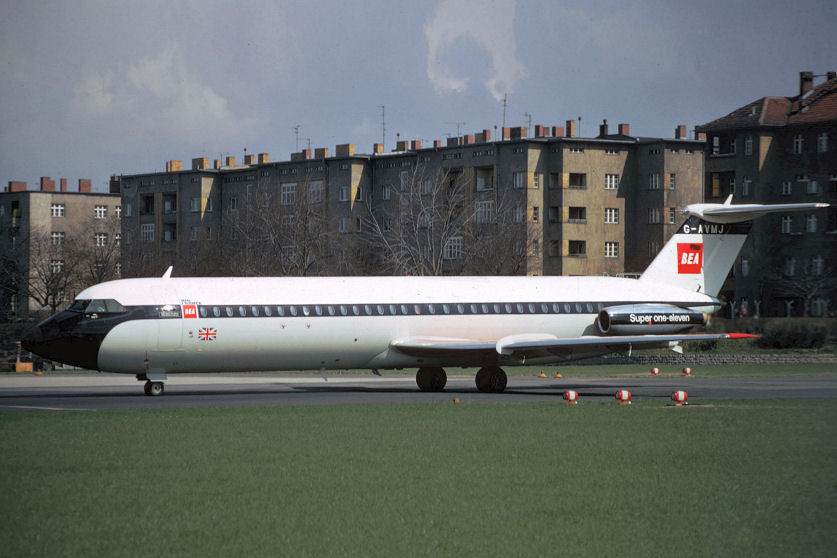
Initially these were ad hoc flights on the Tempelhof - Hamburg route but full services commenced on the 17th November. Routes flown from Tempelhof by BEA were Bremen, Cologne, Dusseldorf, Frankfurt, Hamburg, Hannover, Munich and Stuttgart. The Tempelhof 1-11 fleet, which numbered as many as nine aircraft, were flying up to twelve sectors a day on routes less than 400 miles long with 20 minute turnarounds in many cases. These involved flying through 20 mile wide corridors at 10,000ft over East Germany. All this meant that Berlin Tempelhof was BEA's second busiest station after Heathrow with as many as 90 take off and landings a day! During April 1969 an agreement was struck with Air France that the 1-11s would fly joint BEA / Air France flights in and out of Tempelhof to Frankfurt and Munich since their own Caravelles were deemed unsuitable for operations at the airport as they didn't have thrust reversers. The livery of the BEA 1-11s was modified slightly to reflect this arrangement and Air France stickers were placed on the aircraft. This arrangement lastest until October 1972. Services peaked during 1971 when over five million pasengers used Tempelhof with over two million flying with BEA.
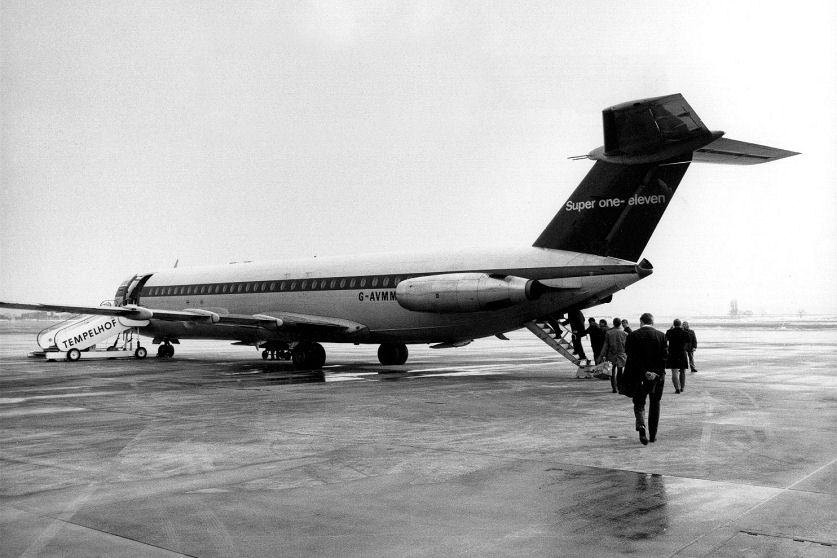

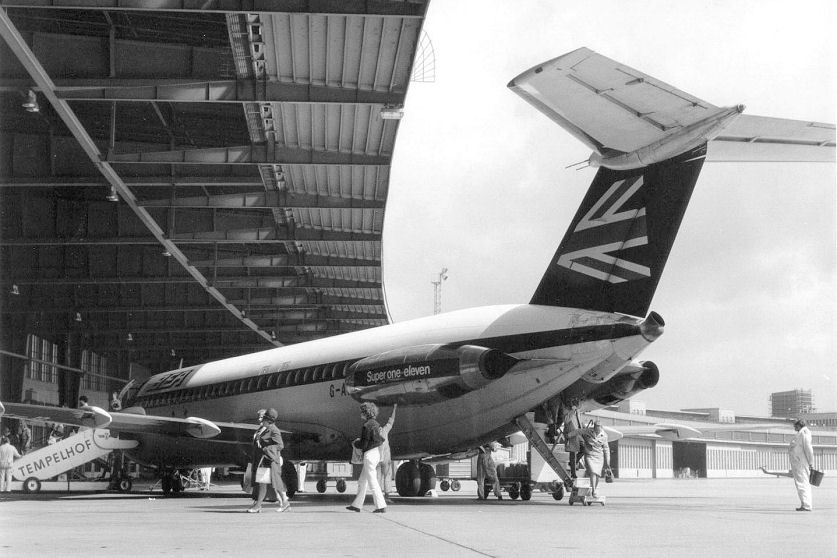
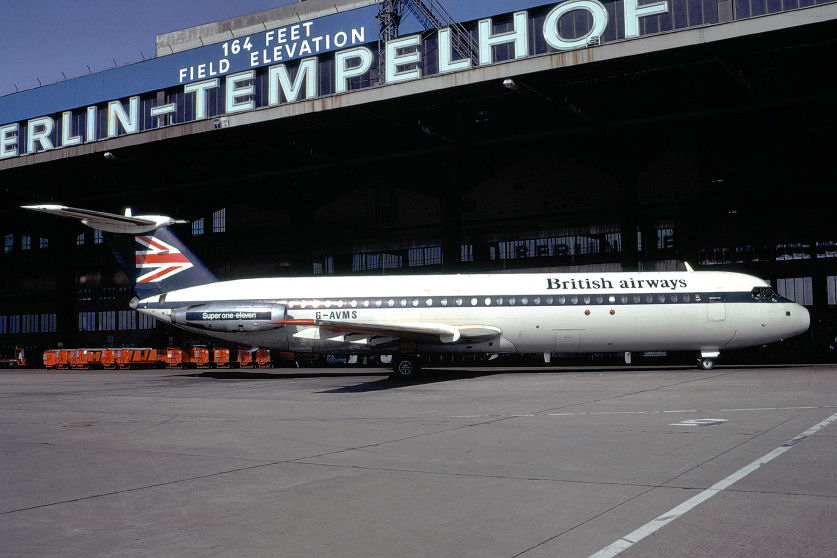
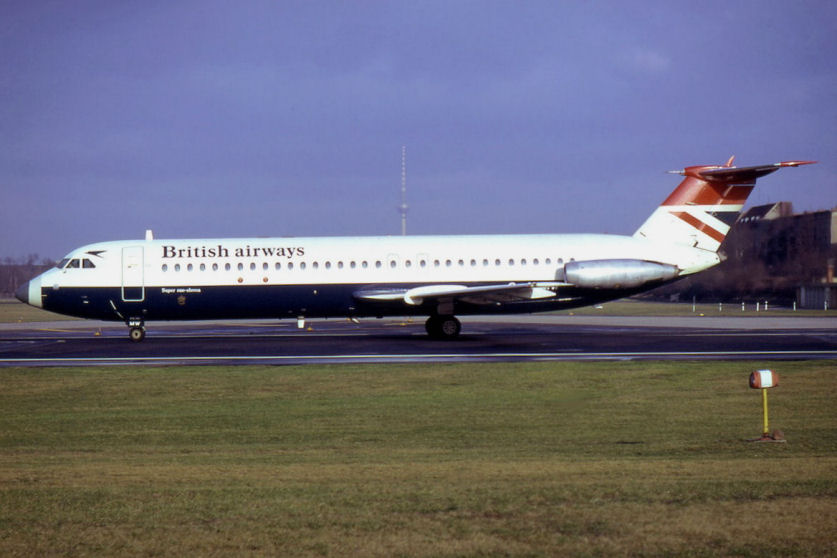
To back up this sizeable operation Cambrian 1-11s were also utilised from 1970 to 1972.
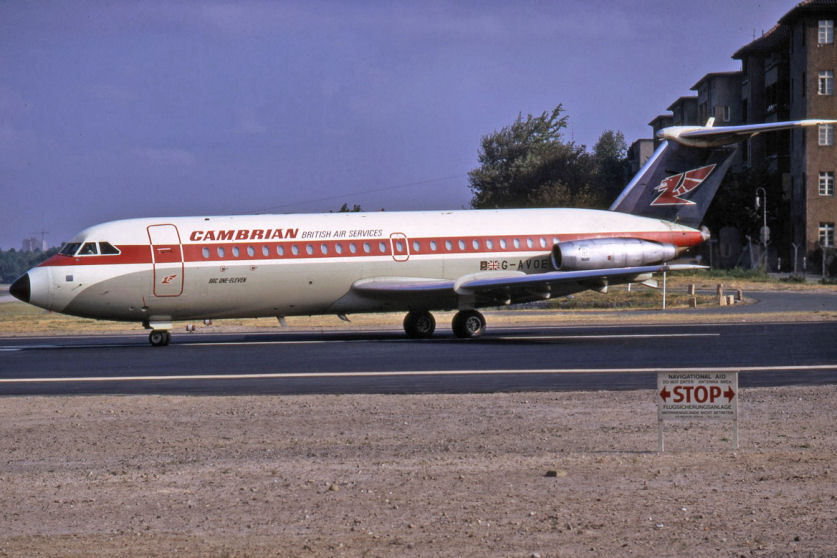
Occasionally Laker 1-11s were leased to BEA and G-AVBY can be seen with BEA / Air France stickers on it during a visit to the airport.
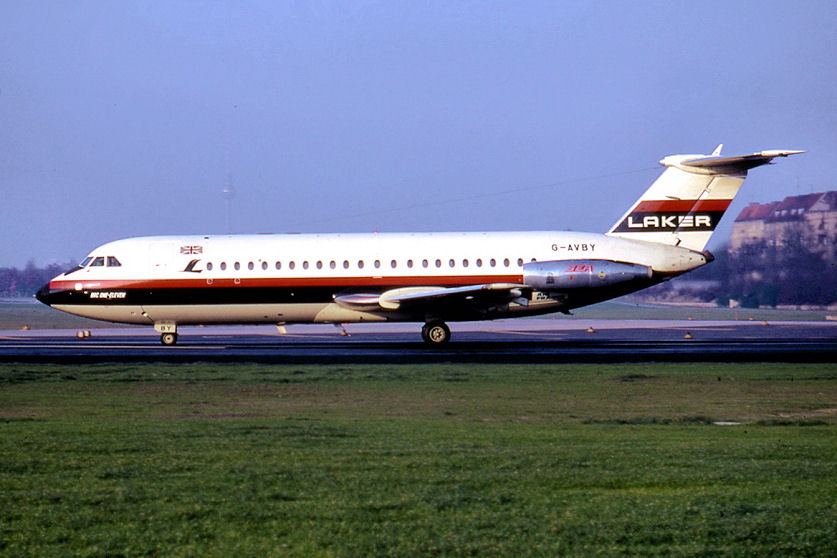
Dan Air 1-11 G-AXCP on a rare visit to Tempelhof on the 24th May 1974
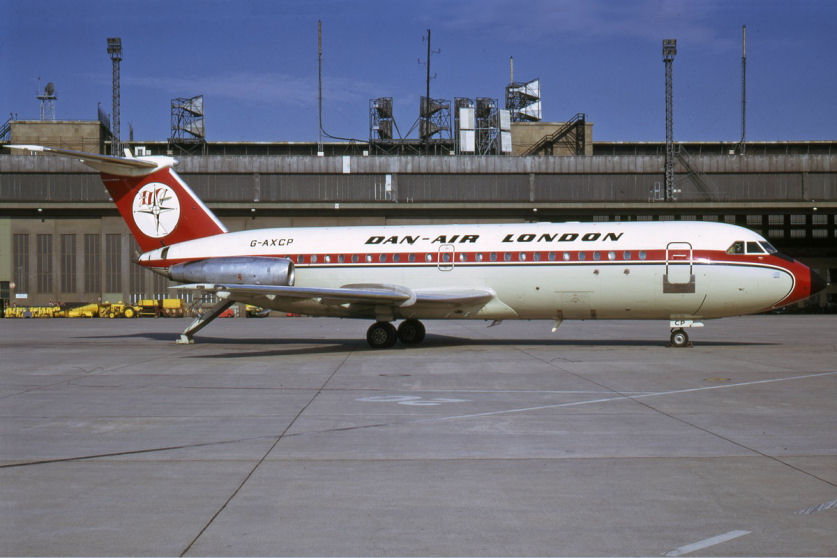
All of this came to an abrupt end on the 31st August 1975. From the 1st September all civil flight operations were moved to Tegel airport. The US military were once again the sole user of the airport up until 1985. Lufthansa recommenced their first flights since before the war during October 1990 after reunification. The US military finally moved out in 1993 after the cold war had ended and Lufthansa eventually moved all their operations to Tegel in 1994. The airport was now in serious decline, which has continued to this day. By 2008 there were only a small number of private aircraft and just a handful of short haul flights flying to and from the airport, with an even smaller number of based aircraft. Only a small percentage of the original terminal was still in use for airport operations! Because of the airport's location right in the heart of the city, the decision was taken to close it as soon as an agreement had been reached on the provision of the "new Berlin airport" which will be located at Schonefeld. Despite a great effort from airport supporters to keep the site open, a "none binding" referendum, which took place earlier this year, failed to change the mind of those who wished to close the historic airport at the end of October 2008. Its final great moment came in 2006 when the FIFA World Cup Final was held in Berlin. All private / executive aircraft were routed into Tempelhof which resulted in the highest number of movements since the Berlin Airlift! It was estimated that there were nearly 1000 movements with about 250 visiting aircraft! Click on this link to get some idea of the huge scale of the operation!
Despite having a relatively short runway which was deemed unsuitable for Air France's Caravelles, aircraft right up to the size of Boeing 747 and C-5A Galaxy have landed at the airport! The last wide bodied aircraft to ever visit was Airbus A330 D-ALPD on the 8th September 2007 for an enthusiast flight. I would imagine that the most famous aircraft in Tempelhof's history is the DC-3.
The last BAC 1-11 to visit was Jetline's VP-CJL on the 28th January 2004.
Fortunately the terminal is now a "protected historic landmark". It has been labelled as a monument to Nazi ambitions to a symbol of hope during the Berlin airlift. Even the famous architect Sir Norman Foster was once quoted as saying that Tempelhof was "The mother of all airports"! It's design is totally unique and has never been seen anywhere else in the world, so it is only approriate that it is being saved for posterity.
I would like to thank Ralf Manteufel for supplying some of the BAC 1-11 images for this article. Ralf has spent many hours uploading Tempelhof images to aviation websites such as airliners.net and planepictures.net. Amazingly, Ralf has been photographing aircraft at Tempelhof for the past 50 years which has given us a unique insight into the incredible history of the airport.